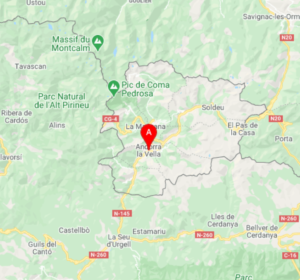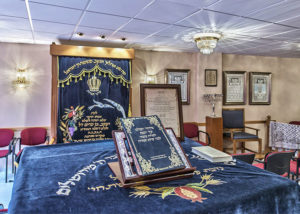 Andorra is a small landlocked country in the Pyrenees between France and Spain, which serves as a tourist destination and tax haven, and many foreigners have established homes there. The Jewish history and culture of Andorra was practically nonexistent after the expulsion of the Jews from the Iberian peninsula in the 1490s. In the 19th century, Jews were again permitted to enter.
Andorra is a small landlocked country in the Pyrenees between France and Spain, which serves as a tourist destination and tax haven, and many foreigners have established homes there. The Jewish history and culture of Andorra was practically nonexistent after the expulsion of the Jews from the Iberian peninsula in the 1490s. In the 19th century, Jews were again permitted to enter.
The first Jewish immigrants settled in Andorra during World War II, as the country served as a passageway for Jewish refugees fleeing the Nazis. The Andorrans provided food and shelter to the Jews. While some of those immigrants made their homes in Andorra, most continued on to Spain and Portugal seeking exit from Europe.
 In 1967, there was an influx of Jewish immigrants from Morocco during the Six Day War. A Jewish cultural association, Associació Cultural Israelita de les Valls d’ Andorra (ACIV), was established in 1998, as prior to this time, laws forbade any other religious organization other that Catholic. In 2000, the Jewish community opened and consecrated a synagogue and a cultural centre.
In 1967, there was an influx of Jewish immigrants from Morocco during the Six Day War. A Jewish cultural association, Associació Cultural Israelita de les Valls d’ Andorra (ACIV), was established in 1998, as prior to this time, laws forbade any other religious organization other that Catholic. In 2000, the Jewish community opened and consecrated a synagogue and a cultural centre.
Today an estimated 100 or so Jews reside in Andorra. Most are from Morocco, with others from Argentina, Spain, Israel and elsewhere. A Jewish cultural association, Associació Cultural Israelita de les Valls d’ Andorra (ACIV), was established in 1998 (before that laws forbade any other religious organization other that Catholic), and a small synagogue was opened in 2000 in the capital, Andorra La Vella.
 During World War II, 1939-1945 more than 20,000 Jews escaping the Holocaust passed through the Pyrenees. They travelled to the village of Les on the French border in the Val d’Aran, which served as a crossing point for the so-called escape routes or freedom trails. The Pyrenees had dangerous, unpredictable weather and rugged, snowy terrain. From France the journeys into Andorra could last between three and seven days over high mountains.But there was an equally perilous threat: immediate death or deportation to labor or extermination camps if discovered by the Nazis or French Vichy police.
During World War II, 1939-1945 more than 20,000 Jews escaping the Holocaust passed through the Pyrenees. They travelled to the village of Les on the French border in the Val d’Aran, which served as a crossing point for the so-called escape routes or freedom trails. The Pyrenees had dangerous, unpredictable weather and rugged, snowy terrain. From France the journeys into Andorra could last between three and seven days over high mountains.But there was an equally perilous threat: immediate death or deportation to labor or extermination camps if discovered by the Nazis or French Vichy police.
At the end of the journey, there was always the risk of being captured by the Franco government and imprisoned in the Miranda de Ebro concentration camp.